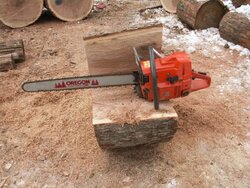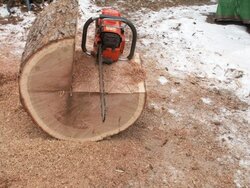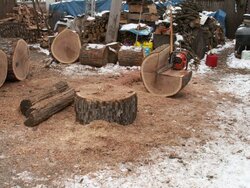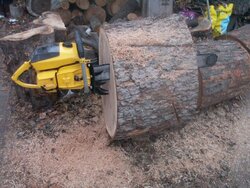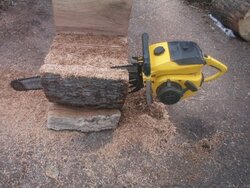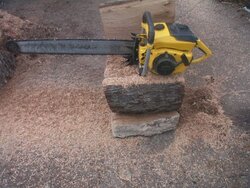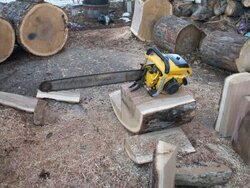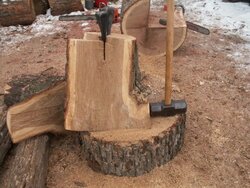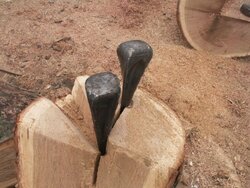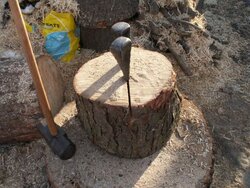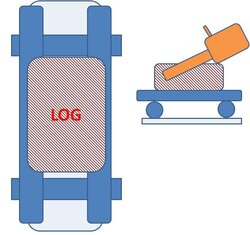I've been working on this huge oak for several months. I have to cut the rounds in half just to be able to
move them in place to split. Now I'm getting close to the bottom...very very large rounds. Now I'll cut them
in half and then probably half again. I'll be cutting along the grain...ripping them. I do not have a ripping
chain for my saw so I am filing the chain on a 10 degree angle (ripping) vs. 30 degrees (cross cutting).
Of course, this is only because I've got several old chains around and really don't want to have to buy a ripping chain. So, whose done this same thing and how successful has it been? Cutting along the grain?
Thanks,
Cliff
NC
move them in place to split. Now I'm getting close to the bottom...very very large rounds. Now I'll cut them
in half and then probably half again. I'll be cutting along the grain...ripping them. I do not have a ripping
chain for my saw so I am filing the chain on a 10 degree angle (ripping) vs. 30 degrees (cross cutting).
Of course, this is only because I've got several old chains around and really don't want to have to buy a ripping chain. So, whose done this same thing and how successful has it been? Cutting along the grain?
Thanks,
Cliff
NC




